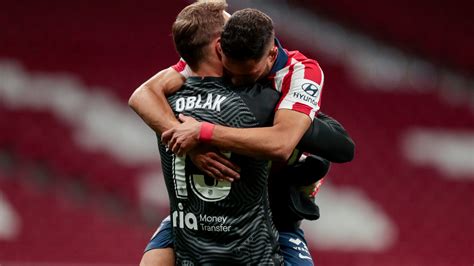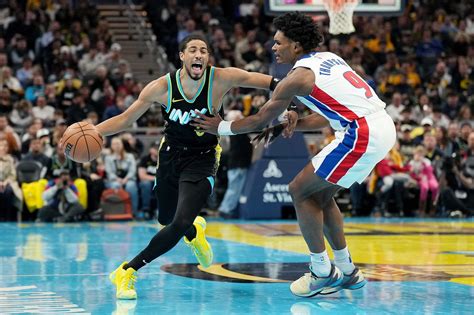Explore Manchester City’s tactical formations, key players, possession strategies, defensive solidity, and their success in crucial matchups, including against Sparta Prague.In the ever-evolving landscape of football, tactical acumen often determines the success of a team on the grand stage. Manchester City has long been revered for its innovative strategies, particularly when facing formidable opponents like Sparta Prague. This article delves into the tactical nuances that make Manchester City a powerhouse, highlighting the formations, key players, and possession-based game that define their style. By understanding their approach to both offense and defense, we can uncover how City consistently outmaneuvers rivals and maintains its competitive edge. Join us as we analyze the critical elements of Manchester City’s tactics, revealing the key to unlocking victory against Sparta Prague and reinforcing their status in the football elite.
Understanding Manchester City’s Tactical Formations
One of the defining characteristics of Manchester City’s approach to the game is their versatility in tactical formations. Pep Guardiola, the team’s manager, has been known for employing multiple formations depending on the opponent and the context of the match. This tactical fluidity allows Manchester City’s players to adapt quickly and maintain a competitive edge on the field.
Here are some of the most commonly used formations by Manchester City:
| Formation | Key Features |
|---|---|
| 4-3-3 | This is the primary formation used by Guardiola, emphasizing width and fluid attacking play, with wingers stretching the defense. |
| 4-2-3-1 | This formation allows for a strong midfield presence and can quickly transition between defense and attack, providing flexibility against various opponents. |
| 3-5-2 | Adopting a three-man defense often provides more defensive stability while also allowing wing-backs to push forward and support the attack. |
Regardless of the formation, Manchester City’s key tactical principles remain consistent:
- High Pressing: The team maintains a high defensive line and implements rigorous pressing to recover possession quickly.
- Positional Play: Players occupy specific zones on the pitch, which enhances passing options and creates overloads in critical areas.
- Ball Circulation: Quick ball movement is essential in creating spaces and breaking down organized defenses.
This tactical sophistication supports Manchester City’s offensive strategies, allowing them not only to dominate possession but also to exploit defensive weaknesses effectively.
Key Players Driving Manchester City’s Strategy
Central to Manchester City’s tactical success are its key players, who not only execute the strategies devised by their coach but also serve as catalysts for creativity and defensive solidity on the pitch. These individuals play crucial roles in both the attacking and defensive phases of the game, making them indispensable to the team’s overall performance.
One of the standout figures is Kevin De Bruyne. As a midfield maestro, De Bruyne excels in creating scoring opportunities through his vision and passing. His ability to dictate the tempo of the game and penetrate opposing defenses with pinpoint through-balls is a defining characteristic of Manchester City’s attacking strategy.
Another vital player is Ruben Dias, who anchors the defense with his leadership and composure. Dias’s strong tackling and positional awareness not only bolster Manchester City’s defensive line but also allow other attacking players the freedom to push forward, knowing that the backline is well-protected.
Erling Haaland has also made a significant impact since joining the team, providing a clinical finishing touch to the army of chances created by his teammates. His pace and physicality make him a nightmare for defenders, often drawing multiple markers that can open up space for other players in the attacking third.
To complement these key players, Manchester City’s tactical flexibility relies on their wing-backs, such as João Cancelo and Oleksandr Zinchenko. Their ability to push high up the pitch and provide width enables the team to stretch opponents and create scoring angles from various positions.
The synergy among these key players not only enhances Manchester City’s tactical execution but also reinforces their identity as one of the most formidable teams in contemporary football. By leveraging the unique strengths of each player, the team continues to adapt and thrive against a variety of competitive opponents.
How Manchester City’s Possession Game Affects Opponents
One of the most defining features of Manchester City’s tactical approach is their emphasis on maintaining possession of the ball. This strategy not only showcases their ability to control the game’s rhythm but also creates significant challenges for their opponents. By dominating possession, Manchester City’s players can dictate the pace, forcing their rivals to engage in a defensive game while trying to regain the ball.
When faced with Manchester City’s possession-dominant style, teams often find themselves structured in a compact formation. This is done to close down spaces, making it difficult for City to penetrate through the middle. However, this tactic can backfire; as players become exhausted from chasing the ball, they may leave gaps that Manchester City’s nimble attackers readily exploit.
Moreover, the psychological effect of consistent possession cannot be underestimated. Opponents may become frustrated and lose confidence, impacting their overall game plan. An example of this is in matches where Manchester City has successfully frustrated their rivals, leading to uncharacteristic errors and lapses in concentration. This highlights how essential possession is to Manchester City’s strategy, as it not only controls the flow of the game but also undermines the opposition’s confidence and decision-making abilities.
Manchester City’s possession game serves as a tactical weapon that affects both the mental and physical states of their opponents. By mastering this element of play, they not only enhance their own performance but also significantly diminish the effectiveness of those who stand in their way.
Defensive Solidity: A Pillar of Manchester City’s Tactics
One of the foundational aspects of Manchester City’s tactics lies in their defensive solidity. This is not merely a matter of players standing firm at the back; it is a comprehensive approach that encompasses team organization, transition play, and strategic pressing. By prioritizing a robust defense, Manchester City’s tactics allow them to dominate matches both defensively and offensively.
Key elements contributing to their defensive solidity include:
| Element | Description |
|---|---|
| High Defensive Line | Utilizing a high defensive line enables rapid recovery of possession and reduces space for opposing forwards. |
| Pressing System | The team engages in coordinated pressing, forcing opponents into mistakes and regaining possession quickly. |
| Quality Depth | The depth in squad quality allows for effective rotation, maintaining high defensive standards across matches. |
| Versatile Defenders | Players like Ruben Dias and Joao Cancelo are integral, showing both defensive prowess and the ability to support attack transitions. |
Moreover, Manchester City’s defensive strategy is heavily supported by their midfielders, who track back effectively and maintain pressure on the ball. This creates a seamless transition from defense to attack, effectively choking off opposition advances before they can materialize into significant threats.
This combination of a high defensive line and intense pressing contributes to a characteristic of Manchester City’s game: they not only aim to stifle their opponents but also look to use that solid foundation to launch quick counter-attacks, maximizing their offensive potential as soon as they regain possession.
Analyzing Manchester City’s Success Against Sparta Prague
When examining the historical performance of Manchester City’s tactics against Sparta Prague, several key factors emerge that highlight their strategic superiority. Matches between these two clubs often showcase Manchester City’s ability to adapt and impose their style of play effectively.
Firstly, Manchester City’s tactical flexibility plays a pivotal role. The team is known for its ability to shift formations and strategies mid-game, allowing them to exploit weaknesses in the opposition. Against Sparta Prague, this adaptability has often led to creating goal-scoring opportunities, particularly through quick, incisive passing in the final third.
Secondly, the emphasis on high pressing is another tactic where Manchester City’s players excel. By pressing aggressively when the ball is lost, they can regain possession quickly and catch the opposition off guard. This relentless pursuit often disrupts Sparta’s rhythm, making it difficult for them to settle into their own game plan.
Moreover, analyzing past encounters, it becomes clear that Manchester City’s superior individual talent has been decisive. Players with high technical skills and tactical intelligence can break down defenses that might otherwise pose a challenge.
Furthermore, the psychological edge that comes with consistent performance in previous matchups has built a certain level of confidence within the Manchester City’s squad. This mental fortitude, combined with effective coaching, allows them to approach games against Sparta with a winning mentality.
The combination of tactical flexibility, high pressing, individual brilliance, and psychological advantage contributes significantly to Manchester City’s success against Sparta Prague. Through these strategies, the team not only secures results but also sets the stage for dominating performances in European competitions.
Frequently Asked Questions
What are the primary tactics employed by Manchester City against Sparta Prague?
Manchester City’s primary tactics against Sparta Prague include high pressing, quick ball movement, and utilizing the width of the pitch to stretch the opposition’s defense.
How does Manchester City adapt its formation for the match against Sparta Prague?
Manchester City often employs a flexible formation, such as the 4-3-3 or 4-2-3-1, adjusting based on the flow of the game and the strengths of the opposition.
What role do key players play in Manchester City’s strategy?
Key players, such as Kevin De Bruyne and Erling Haaland, are crucial in executing the strategy through their ability to create scoring opportunities and press the defenders effectively.
How important is ball possession in Manchester City’s tactics against Sparta Prague?
Ball possession is vital in Manchester City’s tactics, as it allows them to control the tempo of the game, frustrate their opponents, and create more goal-scoring chances.
What defensive strategies does Manchester City employ when facing Sparta Prague?
Manchester City employs a compact defensive structure, focusing on maintaining discipline and pressing high to recover possession quickly.
How do substitutions impact Manchester City’s performance against Sparta Prague?
Substitutions allow Manchester City to maintain intensity and freshness, adapting their tactics as needed based on the game’s dynamics and injuries.
What lessons can other teams learn from Manchester City’s approach to beating Sparta Prague?
Other teams can learn the importance of tactical flexibility, maintaining strong communication on the pitch, and the benefit of effective pressing to regain possession quickly.






